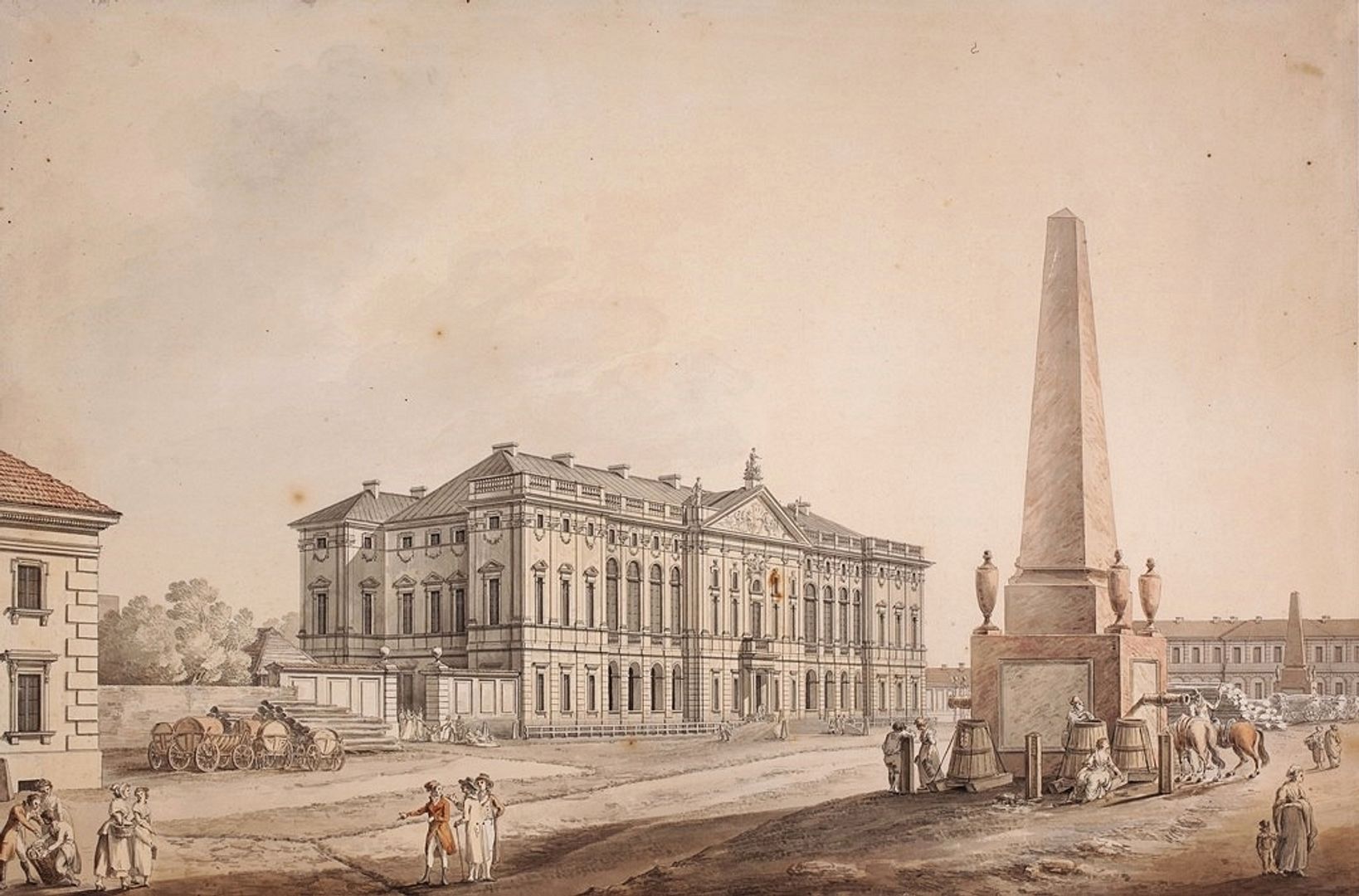Krasiński Palace in Warsaw
6.89

Overview
The Krasiński Palace, also known as the Palace of the Republic, is a Baroque residence built between 1677 and 1695 for the Płock Voivode Jan Dobrogost Krasiński, designed by the architect Tylman van Gameren. Located between Długa and Świętojerska streets, the palace was conceived as a magnificent palace-and-garden complex, inspired by French models. The structure features a symmetrical, two-story rectangular main body and an elaborately decorated façade enriched with sculptures by the Gdańsk artist Andreas Schlüter. The palace was considered one of the most beautiful in Poland, and its interior décor alluded to the legend of the ancient origins of the Krasiński family. After the founder's death, the palace passed from the Krasiński family to the Republic of Poland in 1765, becoming the seat of the Treasury Commission, which led to its reconstruction under the direction of Jakub Fontana. In the 18th century, the palace was also restored after a fire in 1782 and subsequently served various administrative functions until the period of the partitions, when it housed several institutions, including the Supreme Court. After being damaged during World War II, the palace was rebuilt between 1948 and 1961 and has been the home of the National Library since 1958. Today, its interiors house priceless collections, such as medieval manuscripts and works by leading Polish writers. Between 2014 and 2024, the palace underwent revitalization and was opened to the public in 2024, featuring an interactive exhibition space. An interesting fact is that in the Wilanów Hall, a glass urn containing a half-charred book has been placed, symbolically recalling the turbulent history of the building. The Krasiński Palace combines a rich history, valuable architectural elements, and important cultural aspects, making it not only a unique landmark on the map of Warsaw but also a significant site in Polish history and literature.
Location
Tickets
Powered by GetYourGuide
2025 Wizytor | All Rights Reserved